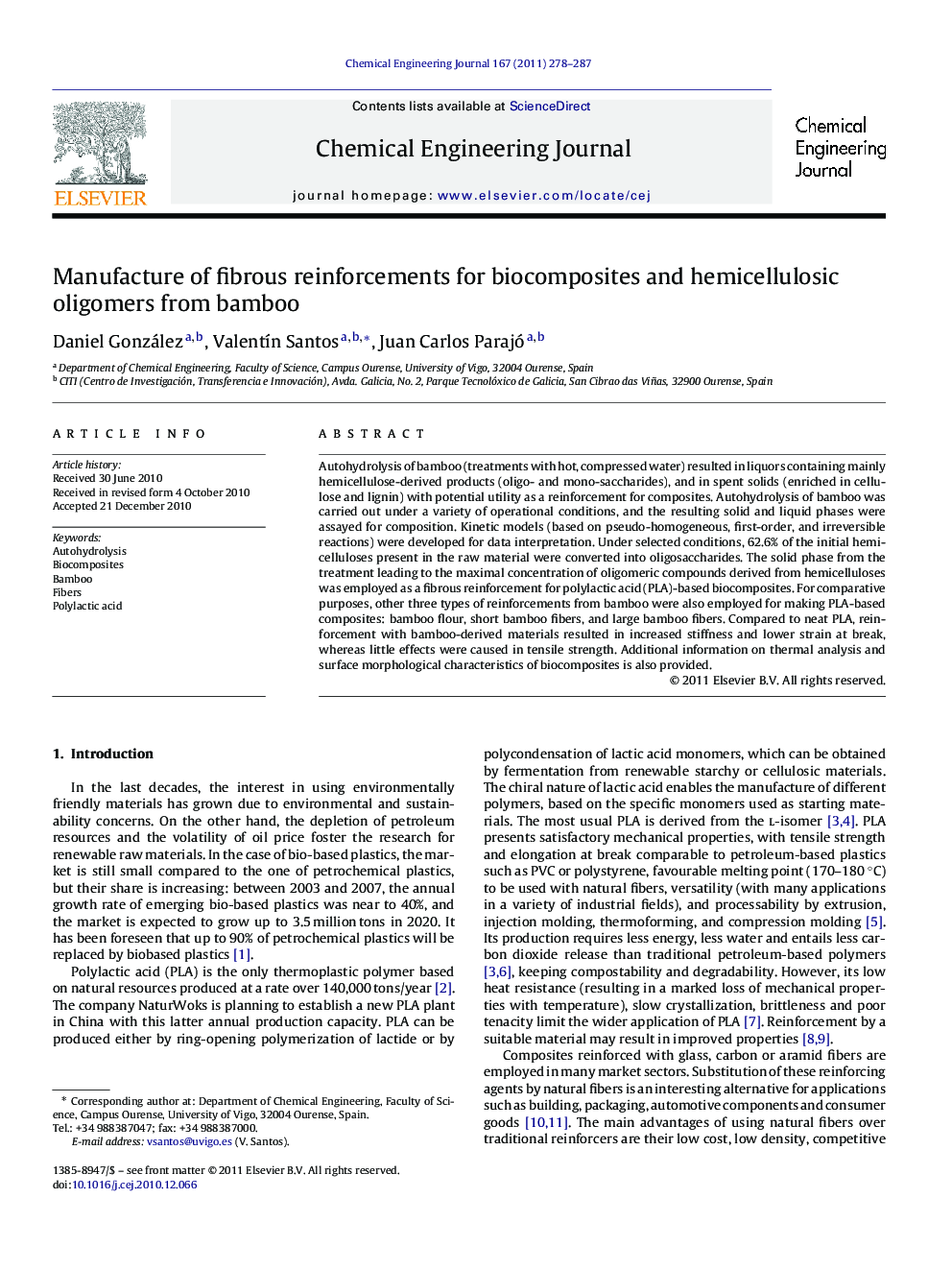| Article ID | Journal | Published Year | Pages | File Type |
|---|---|---|---|---|
| 151633 | Chemical Engineering Journal | 2011 | 10 Pages |
Autohydrolysis of bamboo (treatments with hot, compressed water) resulted in liquors containing mainly hemicellulose-derived products (oligo- and mono-saccharides), and in spent solids (enriched in cellulose and lignin) with potential utility as a reinforcement for composites. Autohydrolysis of bamboo was carried out under a variety of operational conditions, and the resulting solid and liquid phases were assayed for composition. Kinetic models (based on pseudo-homogeneous, first-order, and irreversible reactions) were developed for data interpretation. Under selected conditions, 62.6% of the initial hemicelluloses present in the raw material were converted into oligosaccharides. The solid phase from the treatment leading to the maximal concentration of oligomeric compounds derived from hemicelluloses was employed as a fibrous reinforcement for polylactic acid (PLA)-based biocomposites. For comparative purposes, other three types of reinforcements from bamboo were also employed for making PLA-based composites: bamboo flour, short bamboo fibers, and large bamboo fibers. Compared to neat PLA, reinforcement with bamboo-derived materials resulted in increased stiffness and lower strain at break, whereas little effects were caused in tensile strength. Additional information on thermal analysis and surface morphological characteristics of biocomposites is also provided.
